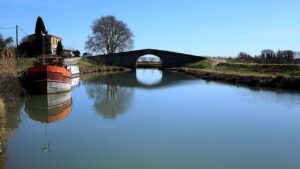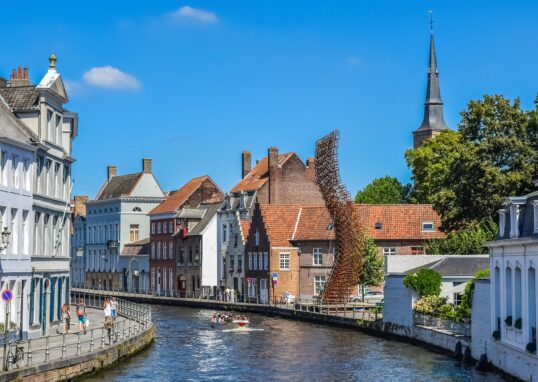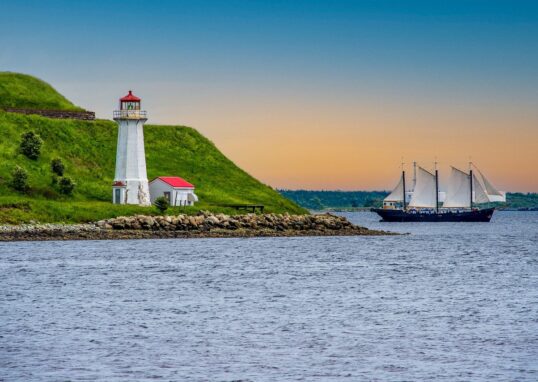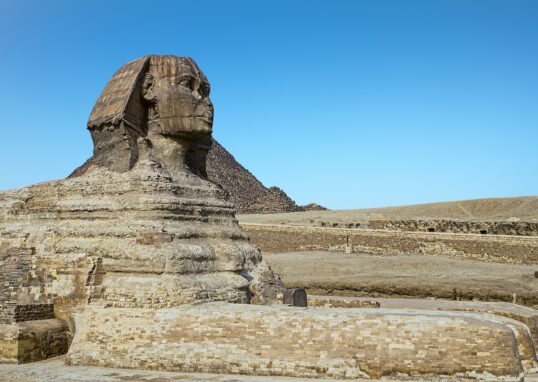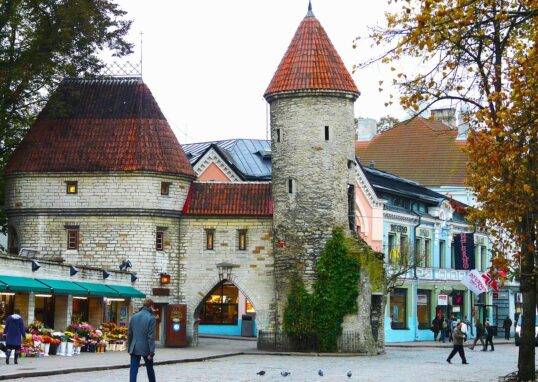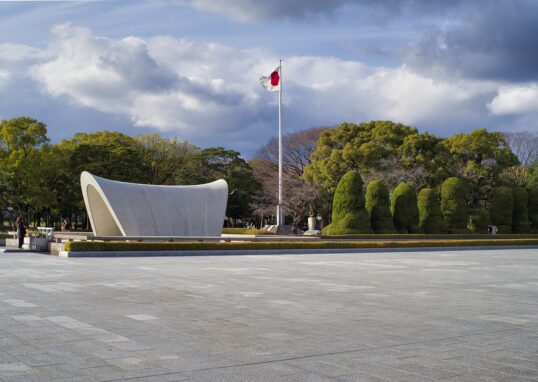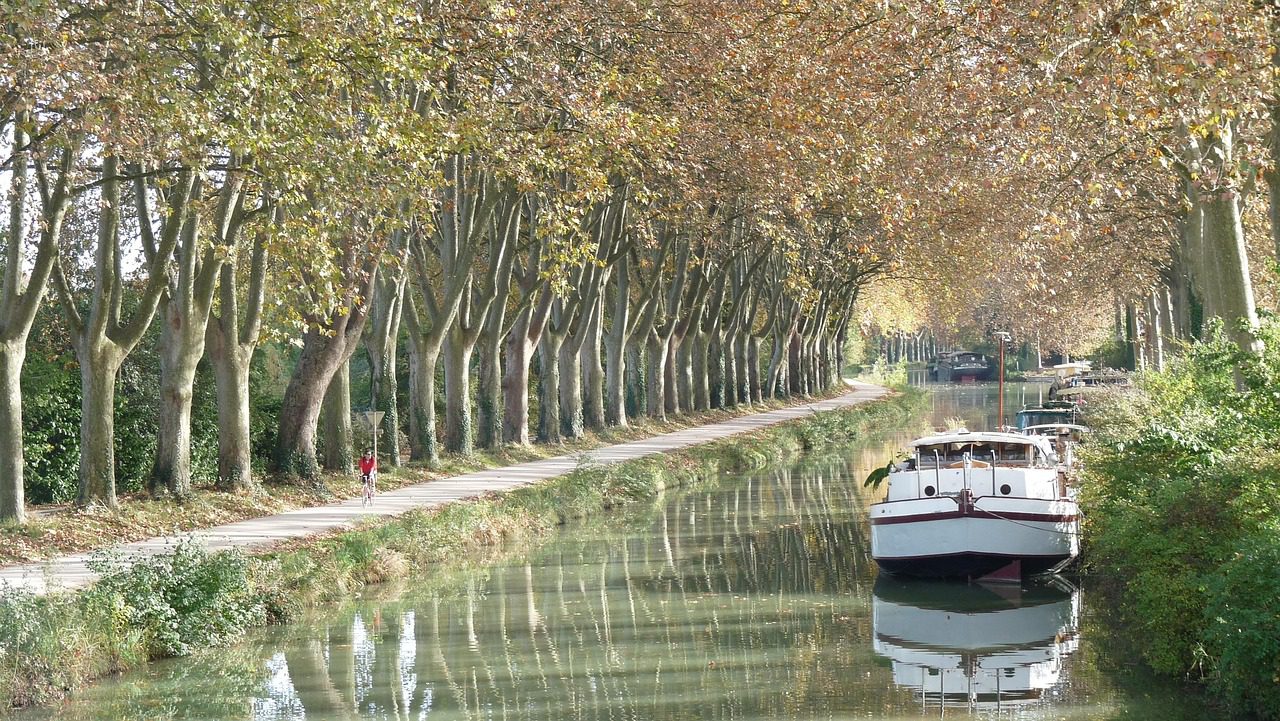
🌊 Canal du Midi – The Timeless Waterway of Southern France
Canal du Midi is one of the most beautiful and historically important canals in Europe. It winds its way elegantly through the sunny south of France along the Garonne River in Toulouse to the Étang de Thau Lagoon on the Mediterranean Sea. This amazing canal is more than 240 kilometers long and navigates through charming villages, vineyards, forests, and rolling hills. Built in the 17th century, the Canal du Midi is counted as one of the world’s greatest engineering works. Planned to be utilized for transportation, but also for visual appeal and compatibility with nature, it is now a UNESCO World Heritage Site that attracts tourists from across the world who visit to indulge in boat cruises, cycling paths, and peaceful landscapes. 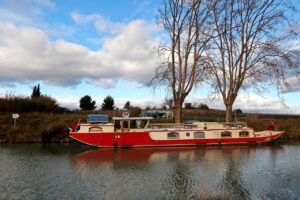
🌿 Historical Background
The concept of building a waterway across southern France dates back to ancient ages. Merchants wanted to link the Atlantic Ocean with the Mediterranean Sea to bypass the long and dangerous sea route around Spain. But it seemed impossible with the natural hurdles, especially the Massif Central mountains and the problem of supplying water to higher areas of the canal. In the 17th century, a French engineer named Pierre-Paul Riquet finally found the solution. He designed a clever system to bring water from the Montagne Noire (Black Mountain) through a network of reservoirs, tunnels, and aqueducts. King Louis XIV supported the project, seeing it as a symbol of French power and progress. Construction started in 1666 and continued for about 15 years. Thousands of workers, engineers, stonemasons, and others were involved in building the canal. It was opened in 1681, connecting Toulouse to the Mediterranean Sea. The Canal des Deux Mers (“Canal of the Two Seas”) was formed when it was linked with the Canal de Garonne later, forming a complete route between the two seas.
🏗️ Engineering and Design
The Canal du Midi is not only a piece of history — it is also a piece of design brilliance. Pierre-Paul Riquet faced many obstacles, but his innovative solutions impressed even modern engineers. The main issue was supplying enough water to the top of the canal, located close to Naurouze. Riquet built the Bassin de Saint-Ferréol, an artificial lake located in the Montagne Noire, to store water and feed it into the canal through complex underground channels. The canal has:
- 63 locks (écluses) that lift and lower boats. 126 bridges across roads and streams. 55 aqueducts that cross the canal over rivers.
- 7 canal bridges and 6 tunnels, of which the famous Malpas Tunnel is the world’s first ever constructed canal tunnel.
All of these were made with accuracy and aesthetics. The majority of locks are oval in shape to allow boats to move smoothly inside. Stone staircases, curved walls, and tree-lined banks all add to the beauty of views.
🚤 Canal du Midi Today
The Canal du Midi is not a transportation route anymore today. It has now transformed into a peaceful retreat for leisure tourism. Thousands of tourists come every year and enjoy boat cruises, cycling vacations, and walking paths along the canal. Located in: Boating
The canal became famous for houseboat vacations. Individuals can rent self-drive boats and slowly cruise through the countryside, stopping at tiny villages, vineyards, and heritage towns.
- Cycling: There is a towpath that stretches along the canal for a long distance, ideal for cycling and walking. The path is flanked by tall plane trees, which bring shade and cool winds even during the summer.
- Wildlife and Nature: Ducks, swans, herons, and fish call the canal home. Flowers, poplars, and plane trees border its shores, leaving the area with a peaceful atmosphere. Travelers can travel at their own convenience, enjoying nature as much as culture.
🕍 Major Sections and Highlights
The Canal du Midi passes through a number of picture-postcard villages and beautiful landscapes. There is a story behind every part of the canal, along with special attractions.
Toulouse
The journey begins in Toulouse, which is known as “La Ville Rose” (The Pink City) for the red-brick buildings. One of the most vibrant cities in France, it is famous for aerospace, history, and art.
- Visitors can see Capitole de Toulouse, Basilica of Saint-Sernin, and Pont Neuf bridge. The canal starts near Port de l’Embouchure where Canal du Midi enters Canal de Garonne.
- Herbettes Canal Bridge and Locks of Castanet are nearby. Toulouse has a good mix of city life and canal charm.
Castelnaudary
Between Carcassonne and Toulouse stands half-way Castelnaudary, a peaceful town named the “capital of cassoulet,” one of France’s favorite bean and meat stews.
- The Grand Bassin is large water storage tank, one section of the canal’s widest point. A ring of restaurants and cafes borders the harbor where tourists can stop. It’s a popular place to rent boats or start a brief boat trip on the canal.
Carcassonne
The next major stop is Carcassonne, the most celebrated medieval town in Europe.
- The Cité de Carcassonne, a UNESCO World Heritage Site, is an immaculately preserved walled fortress with towers and stone ramparts that seem to have been ripped from the pages of a fairy tale.
- Inside the old town, visitors can walk on the ramparts, see the Basilica of Saints Nazarius and Celsus, and enjoy panoramic views. The Canal du Midi floats peacefully past the lower town, offering wonderful boat views of the fortress. Carcassonne is a gem for every canal traveler.
Béziers
Tourists journey further on to arrive at Béziers, an ancient town with a wine, Roman, and Fonserannes Locks reputation.
- The Fonserannes Locks (Les Neuf Écluses) are possibly the most impressive feature of the canal. They constitute a staircase of nine locks that lift boats 21 meters.
- The Orb River Canal Bridge is another of the magnificent structures wherein the canal goes over a river on an aqueduct. The Saint-Nazaire Cathedral in the town is towering above the city, looking down upon the vineyards and canal below.
Agde and the Mediterranean
The last section brings one to Agde, one of France’s oldest towns, established by the Greeks more than 2,500 years ago.
- Agde Round Lock is unique in Europe, allowing boats to reverse in three directions — either towards Béziers, the sea, or river Hérault.
- Black basalt buildings of Agde are a sign of its volcanic origin. Southwards, the canal ends at Étang de Thau, which is a huge lagoon near Sète, where visitors are welcomed by the sea breeze.
🌸 Surrounding Places and Attractions 
The region surrounding the Canal du Midi is full of charm, history, and nature. Taking a meandering path after the canal, you can visit many towns, villages, and vineyards that define the spirit of southern France.
Toulouse Surroundings
Within an hour of Toulouse, there are many places to see:
- Albi, an hour’s journey away, is famous for the Sainte-Cécile Cathedral, a Gothic architectural marvel, and the Toulouse-Lautrec Museum.
- The Lauragais region, between Castelnaudary and Toulouse, is renowned for windmills, sunflower crops, and ancient stone farmsteads. Wine lovers can visit vineyards around Fronton, which are renowned for producing quality red wines.
Carcassonne Surroundings
Tourists can visit medieval villages and countryside around Carcassonne.
- Lastours Castles are perched on top of steep hills to the north of Carcassonne. The four-towered medieval castles dominate the valley and are encircled by forest.
- Montolieu, the “Book Village,” is filled with bookshops, art galleries, and cafés. Lagrasse, one of France’s “Most Beautiful Villages,” is in the Corbières hills and has an ancient abbey and stone bridge.
Béziers Surroundings
The Béziers region is full of vineyards, Roman remains, and beaches.
- The Saint-Chinian and Minervois wine districts produce some of southern France’s best wines. The hilltop Roman Oppidum d’Enserune has expansive views across the canal and odd circular fields below.
- Mediterranean beaches at Valras-Plage and Sérignan are perfect for sunbathing after a day’s cruising.
Agde and Sète
Further along the end of the canal, there is the opportunity to experience sea and seashore life.
- Sète, also known as the “Venice of Languedoc,” is an alive fishing port with canals, bridges, and seafood restaurants. The Étang de Thau Lagoon is famous for oyster farms and sailing.
- The Noilly Prat distillery in Marseillan offers tours on the production of French vermouth. The area boasts canal charm well mixed with Mediterranean beauty.
🌳 Nature, Flora, and Fauna
The Canal du Midi is not only a historic monument but also a living nature. Its banks are lined with over 40,000 plane trees, which stabilize the canal’s banks against erosion. Unfortunately, many of them were stabbed by a fungal disease called canker stain, and replanting programs are under way to replace them. Wild life in the canal consists of ducks, swans, herons, otters, and fish. Birds prefer to nest in the trees, and the serene water attracts many photographers and nature lovers.
🛶 Tourism and Activities
The Canal du Midi is France’s most gorgeous and peaceful place. It is not a canal. It is a complete holiday experience with nature, history, and culture. Thousands of tourists go there every year and enjoy it in their own way. Some come by boat, some by foot, and some by cycling, while others enjoy the small villages and local food along the way. The atmosphere here is serene and calming. Water flowing slowly beneath the tall plane trees, sun on the water, and small villages along the way are some of the attractions. The Canal du Midi offers something for everyone — from nature lovers to foodies and history lovers.
Boating on the Canal du Midi
Boating is the most popular activity in the Canal du Midi. Houseboats or barges can be hired by tourists, and they can travel according to their convenience. The boats are easy to handle, and no license is required for foreign tourists. A short tutorial on how to handle and cross locks is given by the rental firm before starting the trip. There are several starting points, such as Toulouse, Castelnaudary, Carcassonne, Béziers, and Agde. The canal contains over 60 locks that enable boats to ascend and descend between different levels of water. The locks are amusing to watch and even more exciting to ride. Boating allows travelers to stop whenever they want — may be for a picnic, village tour, or wine tasting. Some boats have small kitchens, decks, and bedrooms. It is a home on water. Cruising slowly at around 6–8 km per hour makes it a peaceful experience. Some of the interesting boat trips are:
- Toulouse to Carcassonne: Suitable for first-time travelers. Carcassonne to Béziers: Suitable for sightseeing and wine yards.
- Béziers to Agde and Sète: Perfect for those who want to complete near the sea. Sunsets by the canal are magical. The reflections of the trees and boats in the calm water create an otherworldly scene that tourists cannot help but remember.
🚴 Cycling and Walking Along the Towpath
There is also a towpath that stretches for miles and was once used by horses to pull barges. Today it is a favorite path for cyclists and walkers. It is flat, shaded, and by the water, so ideal for all the family. Cyclists can either rent bikes in bigger towns or use their own. Several companies offer cycling tours with maps, luggage transport, and accommodation booking. The whole journey from Toulouse to Sète is around 240 kilometers and takes 4–7 days by bike. However, visitors also have the opportunity of doing shorter sections. Walking is also a speciality. People love strolling leisurely across green meadows, bridges, and little locks. Couples, families, and solo visitors alike can appreciate the peaceful rhythm of the canal. Spring and summer have the towpath covered with wildflowers and birdsong. Autumn has golden plane trees, which tint the whole path golden and multicoloured. It is the photographer’s dream come true.
🍷 Wine Tourism
The region around the Canal du Midi is famous for vineyards and wine châteaux. The majority of travelers plan their canal holiday alongside wine tasting tours. Major wine regions along the canal are:
- Fronton Wines near Toulouse – manufacturing red wines from the Négrette grape.
- Minervois and Corbières – in the vicinity of Carcassonne and Béziers, creating deep, rich red wines.
- Saint-Chinian – famous for fruity, refined wines.
- Visitors can tour local wineries, meet winemakers, and taste different types. Lunch, picnics, or even overnight stays between vines are possible at certain estates. Summer and autumn offer wine festivals that celebrate the harvest with music, food, and fun. For visitors who enjoy canal life and good wine, this is the destination to visit.
🕰️ Importance and Legacy
The Canal du Midi remains a symbol of human ingenuity and a sign of respect for nature. It is an example of how engineering was brought together with art and the natural environment. It was added to the UNESCO World Heritage List in 1996 due to its universal value. It is not merely a canal — it is a museum, a field of peace, and a party of French craftsmanship.
🌅 Conclusion
The Canal du Midi is not simply a waterway — it’s a journey through time, culture, and nature. From red-brick majesty in Toulouse to blue waves at Sète, every curve of the canal is an epic of vision, patience, and beauty. Whether you cruise along in a boat, walk along the trail, or simply sit under the plane trees and let the sunlight play on the water, the Canal du Midi extends a hand to your heart. It is a location where life, nature, and history walk hand in hand in perfect harmony — a masterpiece of France.




